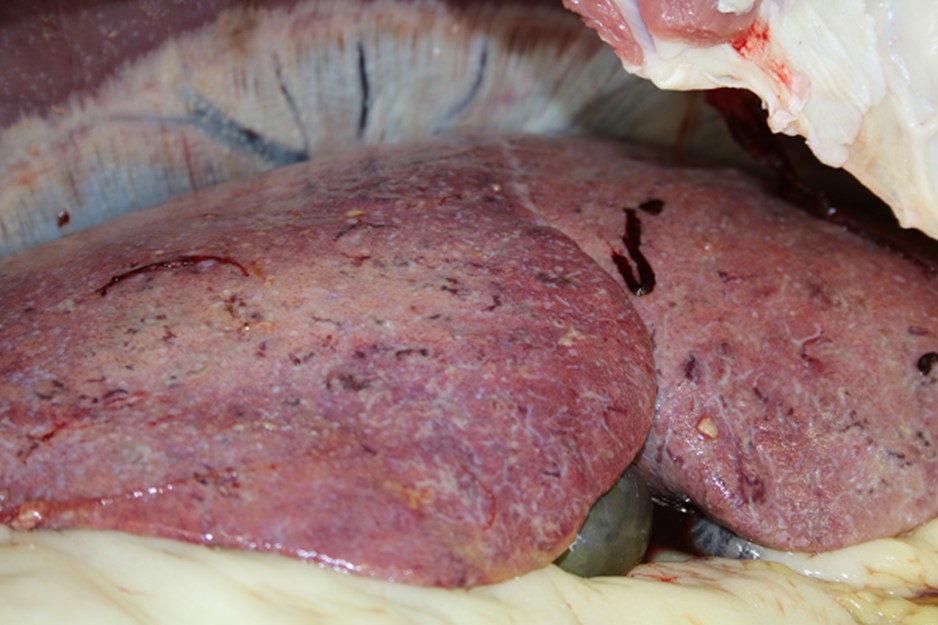Sheep liver fluke infection, scientifically termed fasciolosis, is a parasitic disease caused by the trematode Fasciola hepatica. This flatworm primarily affects the liver and bile ducts of sheep and other ruminants, causing considerable economic loss in the livestock industry. The condition is globally prevalent, especially in regions with wet pastures that support the intermediate snail host.

Understanding Fasciola Hepatica: The Parasite Behind Fasciolosis
Fasciola hepatica is a leaf-shaped fluke measuring 2–3 cm in length, residing in the bile ducts of infected sheep. Adult flukes produce thousands of eggs daily, contributing to environmental contamination and propagation of the disease.
Morphological Characteristics:
- Flat, leaf-like body
- Anterior oral sucker and ventral sucker
- Complex hermaphroditic reproductive system
Lifecycle of the Sheep Liver Fluke
The lifecycle of Fasciola hepatica is indirect and requires a freshwater snail—Galba truncatula—as an intermediate host.
Key Lifecycle Stages:
- Egg: Shed in feces; develops in water
- Miracidium: Free-swimming larva that infects snails
- Sporocyst → Rediae → Cercariae: Asexual stages within snails
- Metacercariae: Infective cysts on grass
- Immature flukes: Migrate through liver tissue causing damage
- Adult flukes: Settle in bile ducts, producing eggs
Pathogenesis and Clinical Signs in Sheep
The pathology of fasciolosis depends on the stage and burden of infection.
Acute Fasciolosis
Occurs 2–6 weeks post-infection due to massive migration of immature flukes through liver parenchyma.
Symptoms:
- Sudden death (especially in young lambs)
- Lethargy and abdominal pain
- Anemia and pale mucous membranes
- Enlarged, painful liver on post-mortem
Subacute Fasciolosis
Seen 6–12 weeks after infection, with a moderate burden of flukes.
Symptoms:
- Progressive weight loss
- Reduced appetite
- Swollen abdomen due to ascites
Chronic Fasciolosis
Result of adult flukes residing in bile ducts over months.
Symptoms:
- Chronic anemia
- Bottle jaw (submandibular edema)
- Diarrhea
- Wool break and poor fleece quality
Diagnostic Methods for Liver Fluke Infection
Early detection is essential for controlling liver fluke outbreaks.
Laboratory Tests:
- Fecal Egg Count (FEC): Traditional method to detect Fasciola eggs
- Coproantigen ELISA: Detects fluke antigens in feces earlier than egg detection
- Serological Tests (ELISA): Identify antibodies against F. hepatica
- Liver Enzyme Profiles: Elevated gamma-glutamyl transferase (GGT) suggests liver damage
- Post-Mortem Examination: Definitive diagnosis by detecting flukes in liver or bile ducts
Economic Impact of Fasciolosis in Sheep Farming
Liver fluke infection leads to substantial financial losses due to:
- Decreased weight gain and productivity
- Condemnation of livers at slaughter
- Reduced wool quality
- Increased veterinary costs
- Mortality in acute outbreaks
Losses are often underestimated due to the chronic and subclinical nature of many infections.
Prevention and Control of Sheep Liver Fluke Infection
An integrated approach combining environmental management, chemical control, and monitoring is key to reducing infection rates.
Strategic Anthelmintic Use
- Triclabendazole: Effective against all life stages of F. hepatica
- Closantel, Nitroxynil: Effective against late immature and adult flukes
- Oxyclozanide and Albendazole: Target adult flukes only
Dosing Strategy:
- Treat at high-risk times (late autumn, early winter)
- Rotate flukicides to prevent resistance
Pasture Management
- Drainage of wet fields to disrupt snail habitats
- Avoid grazing sheep in fluke-prone areas during peak transmission seasons
- Fence off waterlogged and marshy areas
Snail Control
- Application of molluscicides (restricted due to environmental impact)
- Encourage natural predators and improve pasture drainage
Flukicide Resistance and Sustainable Practices
Resistance to triclabendazole has been documented globally. To combat this:
- Implement targeted selective treatment (TST)
- Monitor efficacy using faecal egg count reduction tests (FECRT)
- Integrate biological controls and improved grazing strategies
- Maintain flukicide records and avoid under-dosing
Zoonotic Importance and Public Health Considerations
Fasciolosis is a zoonotic disease, affecting humans who ingest metacercariae-contaminated watercress or raw aquatic vegetation.
Human Fasciolosis:
- Rare but increasing
- Symptoms include fever, abdominal pain, hepatomegaly
- Treated effectively with triclabendazole
Proper livestock management contributes to controlling the human burden of fasciolosis.
Regional and Seasonal Risk Factors
Transmission intensity varies with:
- Climate: Temperate, wet climates favor snail breeding
- Topography: Low-lying, marshy grazing lands
- Seasonality: Peak infection in late summer to autumn; clinical signs often in winter
Risk assessment tools and climate-based prediction models help optimize treatment timing.
Sheep liver fluke infection poses a persistent threat to livestock productivity and farm economics. Effective control relies on a comprehensive understanding of Fasciola hepatica biology, timely diagnosis, strategic use of flukicides, and proactive pasture and snail management. By adopting integrated and sustainable control practices, we can mitigate the burden of fasciolosis while safeguarding animal welfare and public health.

